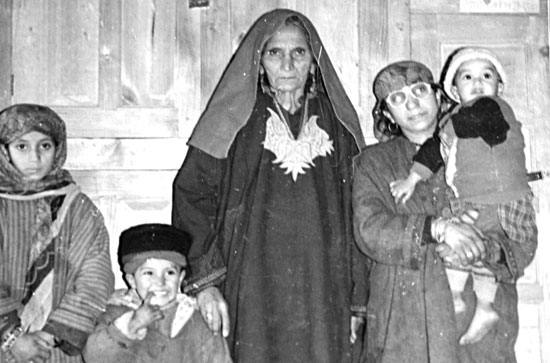A newspaper vendor and a freelance reporter lost his life and son and later a daughter for reporting the news as he saw it. The murder of Ghulam Mohammed Lone is a story of the casualty of truth in a conflict area. Haroon Mirani reports.
Besides selling newspapers, Ghulam Mohammed Lone, 35, had a nose for news that helped him in his freelance reporting. His fearless reporting earned him a few enemies. And in the turbulent times of the early 1990s that could prove very costly.
In 1994 he reported exclusive news that was more of an expose. An army officer B K Sharma who had adopted an alias, Badshah Khan, commanding 197 regiments of Punjab had unleashed a reign of terror in Kangan Ganderbal belt.
Four militants were killed in an encounter at Tangchattar, Kangan but Sharma in his report only showed the recovery of two AK 47 rifles.
In July 1994, militants ambushed an army patrol at Khannan in Kangan and killed an army man. The militants escaped. Sharma, in an act of reprisal, apprehended two civilians from the area and allegedly killed them in cold blood. The duo was labeled as militants and the two AK 47 rifles with Sharma were shown as recovery. Lone reported the news and it was published by the daily Nida-i-Mashriq. From then on life became difficult for Lone.
He was apprehended a couple of times and pressurized to refute the news item. Lone stood by his story. On August 24, 1994, Lone in an army crackdown at Kangan was apprehended, severely tortured, and threatened with his life, newspapers in Srinagar reported.
Five days later in the intervening night of Aug 29 and 30, 1994, allegedly a party of 197-regiment of Punjab Army barged into the home of Lone and fired indiscriminately at Lone and his eight-year-old son Shakil. The father-son duo died on the spot and gunmen made a clean escape.
The incident sent shockwaves among the media fraternity in Kashmir and there was much hue and cry.
Lone’s family was devastated. His wife shocked by the violent deaths of her husband and son was left to fend for her remaining two sons and a daughter. Shakil was her second eldest child. Lone was the family’s sole breadwinner.
Even as the family was reeling under the double tragedy, the army came threatening at their doors. “They warned us of dire consequences in case we pursue the case by naming the army as the perpetrators,” said one of Lone’s relatives.
The close-knit extended Lone family helped them to survive. Abdul Rashid Mir, nephew of late Lone married his widow, even when he was much younger. Other members of the clan also pitched in with help. But the loss was still beyond repair. The family suffered severely from the traumatic experience.
The print media in Kashmir observed a day’s strike on Sept 4, 1994, to mark their protest. The majority of newspapers did not go to print and those which did, did not reach readers as newspaper vendors, hawkers and distributors went on strike.
The government refused the media’s demand for a judicial inquiry into the incident. Although it accepted to order a police inquiry, the police department was almost defunct at that time.
As the case, and the investigation, was not reaching anywhere, family members say the government came up with a proposal to Lone’s family that in case they change the contents of the FIR by naming the murderers as unidentified gunmen rather than the army, an ex-gratia relief would be given to them. For the sake of survival, the family finally relented.
They were also given the hope that one of their family members would be provided job when one of Lone’s wards became a major (18-year-old). The family hoped Fatima Akhter, Lone’s elder daughter would get the job but that was not to be.
In the mass agitation of 2008, a police party swooped on their house and arrested Lone’s elder son. The SHO leading the party allegedly told the family that their son will be killed sending them into shock. For Fatima, it was the repetition of the dark history as she feared her brother will also be killed.
“Such was the shock that soon afterward she fell ill,” said Mir. “We took her to SKIMS, SHMS but her disease could not be diagnosed and her condition deteriorated.” Even when police released her brother, Fatima never recovered from the shock.
Fatima had just completed her graduation and was waiting for the promised job. Then came the shocker from the concerned authorities, as according to them Fatima was not eligible for the job. “They said that Fatima was younger by two and a half months for the age necessary for the award at the time of father’s death for getting the job,” said Mir. “The news further deteriorated Fatima’s health.”
Ultimately on July 3, 2009, she breathed her last. Fatima died at the young age of 26. The family which had now somehow reconciled to their fate were again thrown into a cycle of turmoil.
 (Widows and orphans that Lone left behind)
(Widows and orphans that Lone left behind)
The death was attributed to natural causes, with no protests, no compensation and not a single whimper from the government. But some could see the cause. “It was the similar night, similar gun-wielding persons, similar threats and similar victims,” said one of his neighbors. “What else could have been more suitable for another causality.”
















